

Michael Becker interview
By Scott Stilphen
(2017)

To put it simply, Michael Becker was to Imagic what George Opperman was to Atari. He’s responsible for so much of Imagic’s "image", with everything from game graphics to packaging artwork to advertising. At CGE2004, Mr. Becker was kind enough to allow me to archive his collection of slides that were made, covering the work he did during his time at Imagic, as well as several paintings that were done right before he started working there - much of which you'll see here.
Q: What is your educational background?
Michael Becker: I went to college at California Lutheran College (1967) and UCLA, but never did get around to graduating. I was on a track in pre-law (international relations) and was very active on the debate teams of both schools after a pretty successful debate and public speaking run during my high school years. At some point I found black-light paints and Zap Comics more inspirational and could never go back.
Q: What artists motivated you to pursue a career in art?
Michael Becker: Ron Cobb (LA Free Press, current feature film concept artist), R. Crumb, and Vaughn Bodē.
Q: Did you work for anyone prior to Imagic (after school)?
Michael Becker: I had a bunch of jobs before Imagic, including Art Director for the Berkeley Barb, comic books for the underground press, environmental artwork for Greenpeace and others (first Baby Seal T-shirt, baby!), and a lot of cruddy typesetting, paste-up and freelance artwork jobs that were always as much hassle as money. I did a lot of freelance artwork years before and wanted to learn all kind of styles by doing a piece in the Frazetta, Leindecker, and other styles.
These paintings represent the last time I actually did artwork, right before I took the Imagic job in 1982:
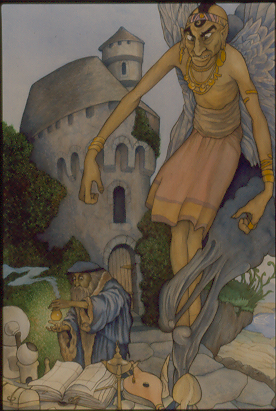
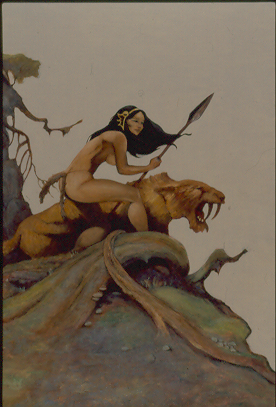
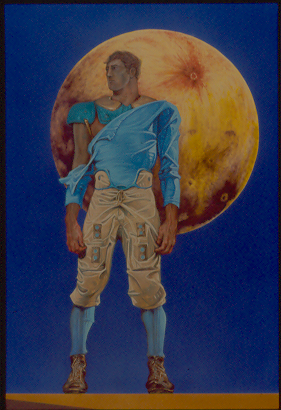
(LEFT) Dulac homage watercolor painting; (CENTER) Frazetta homage oil painting; (RIGHT) J.C. Leindecker homage acrylic painting
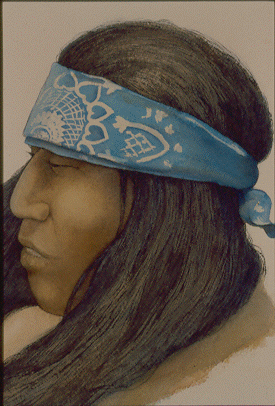
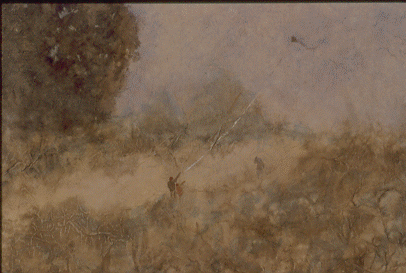
Original watercolor paintings
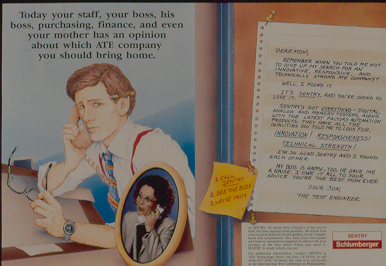
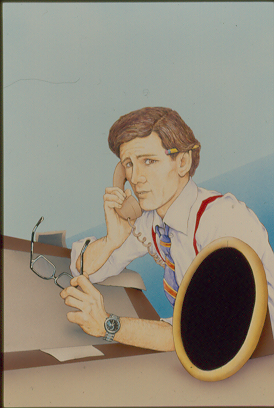
Original Sentry commercial art acrylic paintings.
Q: How did you come to work for Imagic? Was that the only game company you worked for
Michael Becker: It was January of 1982 and I had just read a Time magazine article (Ed.: January 18, 1982 issue) about how coin-op video games were a whole new industry. I was working in an advertising agency at the time and the constant bang-bang-bang of the printing presses was driving me crazy. I resolved to do something else in the New Year, and answered a tiny ad in the newspaper.
It turns out I was one of 350 applicants for the job of Art Director in a ‘video game company’, whatever that was. I did an interview on the phone and kept trying to get out of driving 55 minutes to the actual interview. They finally got a Vice President (Jim Goldberg) on the phone and he talked me into coming in. It was actually because I had a couple board games in my portfolio that caused the most interest.
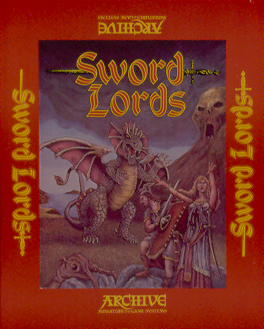
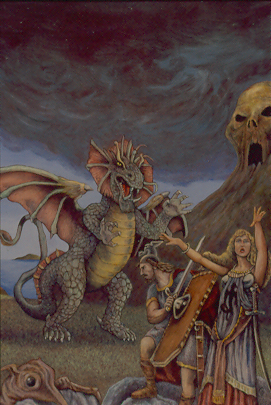
(LEFT) Sword Lords box art; (RIGHT) Original oil painting
Q: Do you remember what board games they were?
Michael Becker: I did all the artwork, typesetting, game design, writing and spot illustrating (even some of the printing!) for the board game Sword Lords for Archive Miniatures - an old D&D style miniatures company - and I’d done that work for fun. I don’t think I got any pay, except for some left-over figures. The artwork (above) was done in a frenzied two days. The 2nd picture is the original oil painting.
I also typeset, did cover work and production layout and spot illustrations for their other board game, Star Rovers. Maybe some copies still exist in one of the game stores in the bargain bin, but I don’t have any slides (I have one copy of Sword Lords, but gave my only copy of Star Voyager to the publisher when he needed it in Vegas, either to sell to leverage into publishing again. I don’t know what happened after that.). These games were done about 1980, before I applied at Imagic. I think they sold a couple thousand copies each. I also did a dart game for the same company, Nuke-A-Tola, that had you pitching darts (nukes) at Iran. Shivver my timbers, that might come back someday to haunt me!
Q: I was able to find some info on Sword Lords but nothing on Star Rovers (or was it called Star Voyager?) or Nuke-A-Tola (what a great name!). I didn't realize that you worked with Wilfredo Aguilar on that! It's amazing that you both have worked together all this time, at 3 different companies. Was that planned, or did things just happen to fall that way?
Michael Becker: We were friends at a company (Gum Street) before I started in the industry and we “war-gamed” evenings and weekends. He joined Imagic a few months after I came on board. I wanted to work with him so he was my first hire there.
Q: At Imagic, you had the titles Art Director and Creative Director. What exactly were your responsibilities there, and what tools/programs were available for you to use?
Michael Becker: I was hired to be the Art Director but during the interview Jim asked if I could help the programmers with their artwork for the games, since what they did was considered cruddy. Without much thought I said, “Sure, how hard can it be?” And actually, back then it wasn’t that hard – mainly because Bob Smith and Rob Fulop had programmed some great art tools for the Atari 800. I used a joystick to ‘paint’ animation frames and another program to sketch in Atari playfield ideas, but had to use graph paper at first to design Mattel screens like the Demon Attack playfields.
It was an amazing time, with Imagic growing as fast as they could spend money. I had a staff of about a dozen artists and a great print Art Director who I managed in putting together the boxes, books and collateral material. After a few months, they asked if I wanted to learn Assembly Language and program games, too, but I was smart enough to say 'no' and become one of the first Creative Directors in the industry instead.
In that capacity I would work with Willy Aguilar (a great game Art Director who now works at EA) and a couple other game artists to make all the graphics for games. I usually took an Atari 800 home and could bang out all the backgrounds and animations in about one weekend.
During the work days I’d jump back-and-forth between working with the programmers (where the action was!) and checking in with the Art Department under Marketing (where the confusion was!). It was about the only way of knowing what games were actually on track for CES.
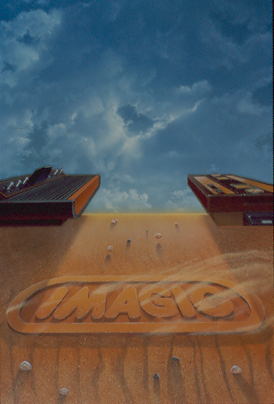
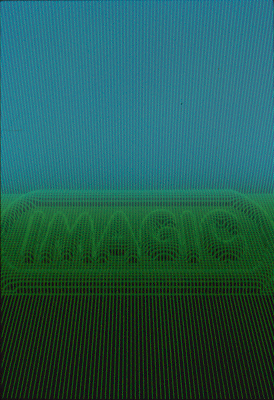
(LEFT) Earliest piece of Imagic logo art ever produced by a contractor. It hung in the lobby.
(RIGHT) A slightly later version of the same, done optically. It was used for a 1984 catalog.
Q: How many titles (or game-related products) have you been involved with? And for what systems (I realize this may cover quite a few)?
Michael Becker: Gosh, including all the foreign language and various platform versions, I once came up with about 125 titles! Let me see if I can recall some of them:
ATARI VCS/2600
Atlantis
Cosmic Ark
Demon Attack (my first sprite!)
Dragonfire
“Fantasy Football” (unpublished)
Fathom
Moonsweeper
No Escape!
Riddle of the Sphinx
Shootin’ Gallery
Sky Patrol (unpublished)
Solar Storm
Star Wars: The Arcade Game
“Tank” (unpublished)
I can’t recall any work I did on Star Voyager, Trick Shot, Cubicolor, or Fire Fighter, but I might have done a sprite or two on the last one.
ATARI 400/800
“Dungeon” (unpublished)
Injured Engine (announced but never released LINK)
Laser Gates
Quick Step
Rat Patrol (unpublished)
Wing War (cover mostly)
INTELLIVISION
Atlantis
Beauty and the Beast
Beezer (? – unpublished)
Demon Attack
Dracula
Ice Trek
Microsurgeon
Nova Blast
Safecracker
Swords and Serpents
Tropical Trouble
Truckin’
White Water
ODYSSEY (with these you had to use a CHARACTER SET for graphics!)
Atlantis
Demon Attack
COLECOVISION
Dragonfire
Fathom
Moonsweeper
APPLE II
Crime and Punishment
I, Damiano: The Wizard of Partestrada
Sherlock Holmes in "Another Bow"
Sherlock Holmes in Under the Boardwalk
COMMODORE 64
The Cave of Time
Chopper Hunt
Crime and Punishment
Demon Attack
Dragonfire
Escape
Injured Engine
Moonsweeper
Nova Blast
Sherlock Holmes in "Another Bow"
Talking Teacher
The Time Machine
VIC-20
Atlantis
Dragonfire
PC (DOS)
Crime and Punishment
I, Damiano: The Wizard of Partestrada
Sherlock Holmes in "Another Bow"
Touchdown Football
PCjr
Crime and Punishment
Demon Attack
Grand Slam Baseball (mostly Willy’s work)
I, Damiano: The Wizard of Partestrada (unpublished)
The Lonesome Gods (Louis L'amour with Bantam – unpublished)
Microsurgeon
Sherlock Holmes in "Another Bow"
Sherlock Holmes in Under the Boardwalk (unpublished)
The Time Machine (unpublished)
Touchdown Football
Imagic was the first 3rd-party PCjr games developer.
TI 99/4a (7 were announced, but I only recall these)
Demon Attack
Fathom
Microsurgeon
Wing War
ALL PLATFORMS
Star Wars: The Arcade Game (vector graphics done as tiles! Crazy!)
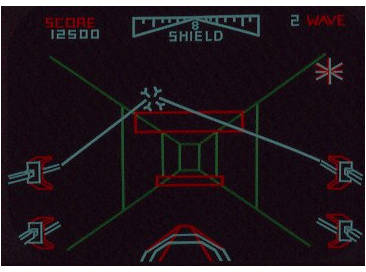
Star Wars: The Arcade Game mock-ups.
Q: Do you recall any products that you worked on that ultimately weren't released?
Michael Becker: There were probably as many that weren’t made as were finally released. We had a fantasy football game for the Atari VCS/2600:
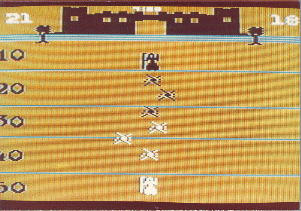
…an Atari VCS/2600 tank game:
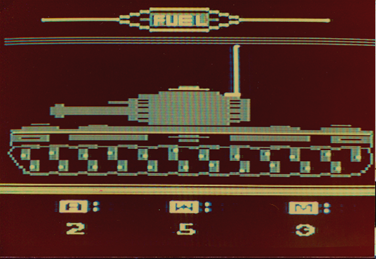
...a cool PCjr tank game that I thought showed promise:
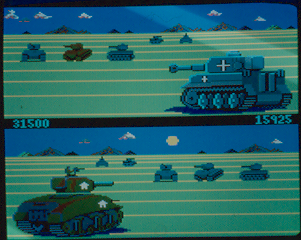
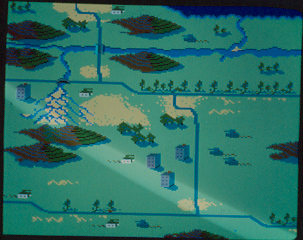
…a PCjr game based on H.G. Wells book, The Time Machine that looked cool, whole Living Literature PCjr game designed with Louis L'amour's biggest novel, The Lonesome Gods, and many more! In fact, one summer all of Imagic went to a brainstorm session and I took notes and made up screens of all the ideas that surfaces. It turns out that of that list of almost 100 game ideas, virtually every one has since been made at least once.
Q: Did your work mainly involve in-game graphics, or were you also involved with packaging or other items aside from video games?
Michael Becker: I did both all the time for the frenzied few years that Imagic existed. I worked with Mark Klein and whipped up the first graphics that we used crude digitizers to get in at title screens (Touchdown Football and other later PC games), did all the work on about a half-dozen games when a batch was coming through, and then designed up the fantasy photographic images for the covers. I’d also check in with the package art and print materials, but the other Art Director, Wendy Zeto, did such a great job that I rarely had to do much more than approve her work!
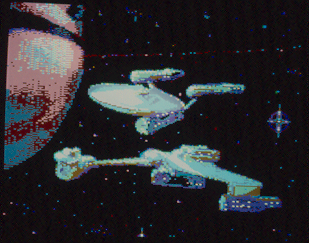
Digitizing test shot using plastic Star Trek models
Q: How were screenshots made back then, since they obviously weren’t actual screen photos?
Michael Becker: They were made from cut-out pieces of stick-colored paper! This was back before we could photograph screens.
Q: There's so many great photos in your collection that I archived such as these. I'll try to include as many as possible in this interview. Let's take them one platform at a time:
|
ATARI VCS/2600 |
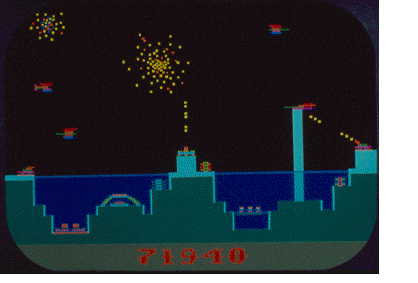
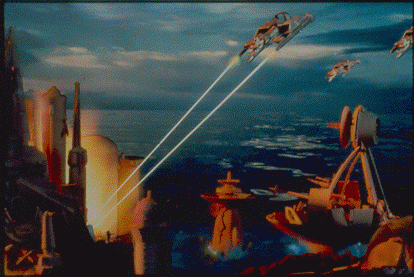
Screenshots (LEFT) and final artwork (RIGHT) for most of the Atari VCS/2600 games
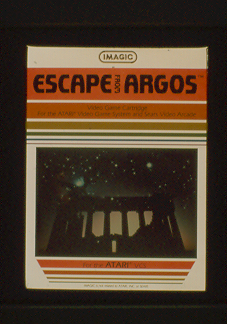
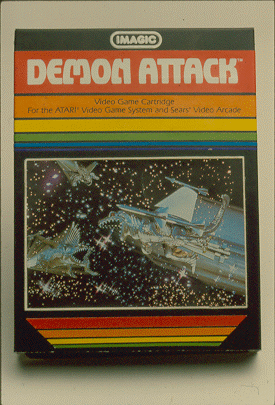
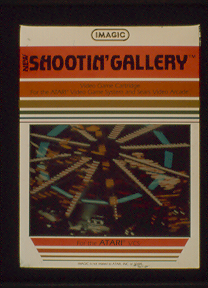
Early box variations for Escape From Argos (AKA No Escape!), Demon Attack, and Shootin' Gallery
Q: A lot of the early Imagic packaging artwork made extensive use of plastic models that were heavily customized - being comprised of several different models. In the Star Voyager artwork, the bottom of the left ship appears to be the Star Wars Millenium Falcon, and the right ship appears to use parts from a
Battlestar Galactica model. Demon Attack used rubber dinosaur figures (by Imperial?), with wings from Micronaut (?) plane toys. Subterranea uses parts of a Star Wars Tie Interceptor, B-Wing Fighter, and Imperial Shuttle models. Cosmic Ark appears to be an amalgamation of several models, although I don’t recognize any.
Michael Becker: The package covers were fun. Willy and I would buy a bunch of model kits, bash together some cool models (we were seriously inspired by George Lucas back then), and work with an outside optical house to layer in special effects. We ended up with a 4x5 image that was pretty slick and was also a fun diversion from the low-rez artwork. We’d also sometimes do an illustration of some type, so we were also able to work with some of Atari’s best painters and graphic designers. Later we used actors and props. With the cover for VCS Solar Storm, the helmet came from a Mountain View army surplus store:
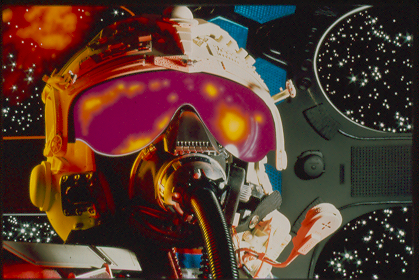
Prop photo for Solar Storm.
All these model photos were bluescreen elements for composite shots on boxes:
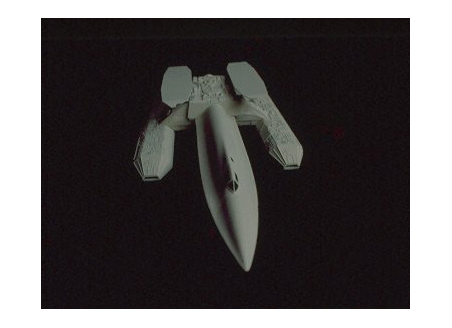
Model photos for Star Voyager.
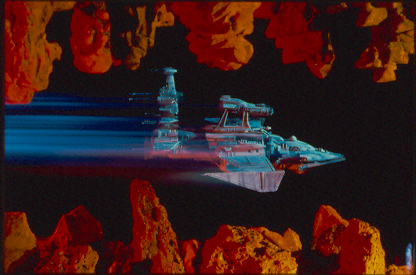
Model photo for Subterranea.
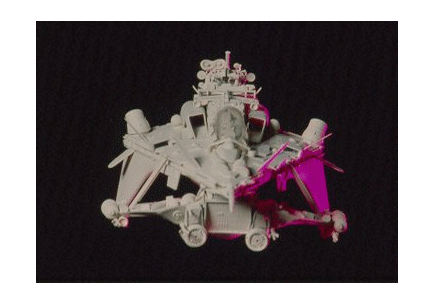
Unknown model photos. It appears to mostly consist of Star Wars models -
a Star Destroyer for the top part, and a Snow Speeder or an X-Wing for the bottom
Michael Becker: This was an early composite for the VCS/Intellivision Atlantis:
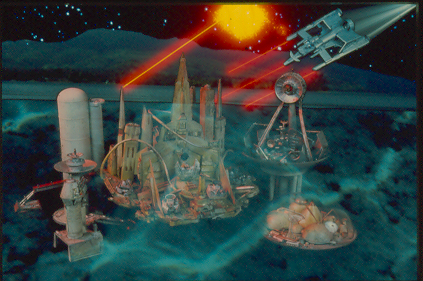
I don’t remember which, if either, made the cover. I recall having an airbrusher in San Francisco add more water, so it might not be either of these versions (Ed.: The VCS box used different 'day' artwork but the manual and cartridge label used the 'night' artwork with less water effects).
This was a Marketing poster (without the copy) for Atlantis. I think they were offering money (gold coins here) in some kind of contest that slips my mind, thankfully:
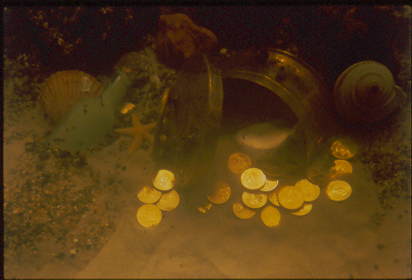
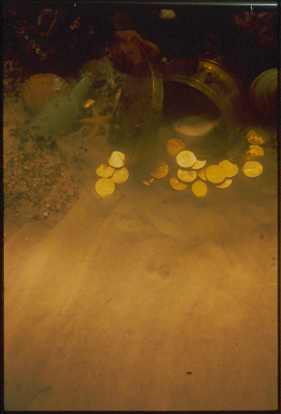
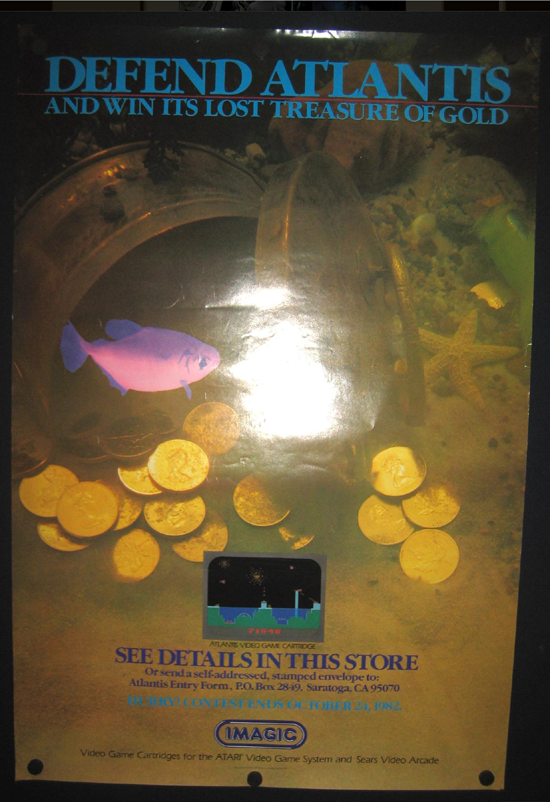
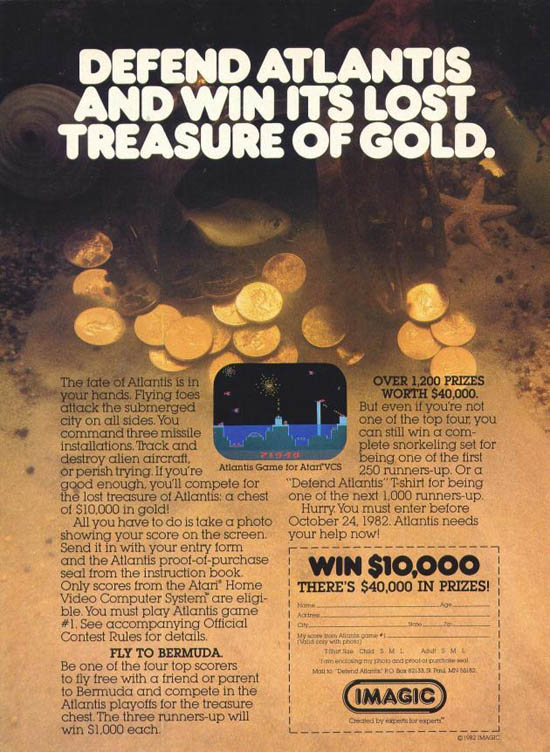
(LEFT) Photo of final Atlantis poster; (RIGHT) Magazine ad
Q: It's the same artwork that was featured in the magazine ads. Like other companies at the time, Imagic also ran contests with some of their games, such as Fathom and Riddle of the Sphinx. No Escape! had an offer for a free Zircon Video Command controller printed right on the box:
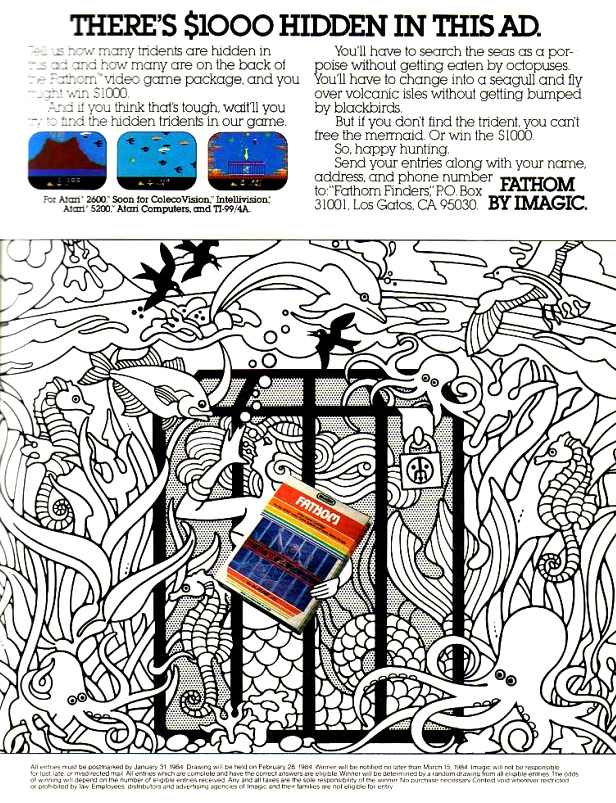
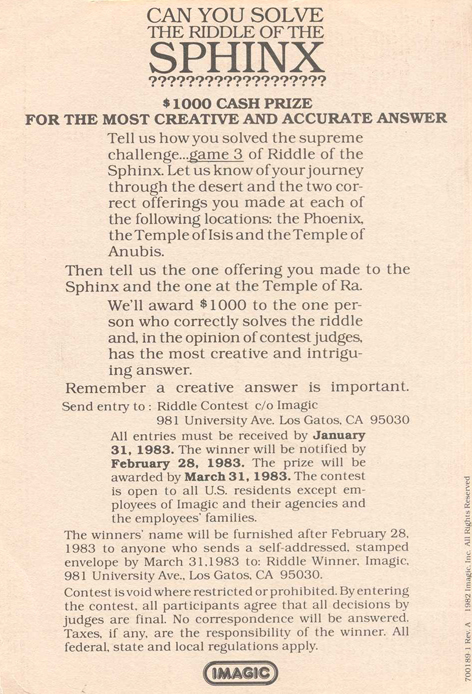
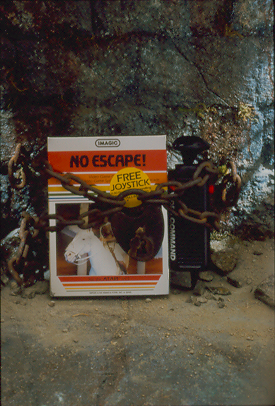
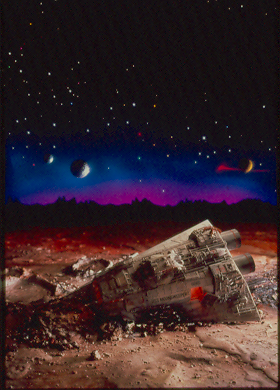
Moonsweeper model set.
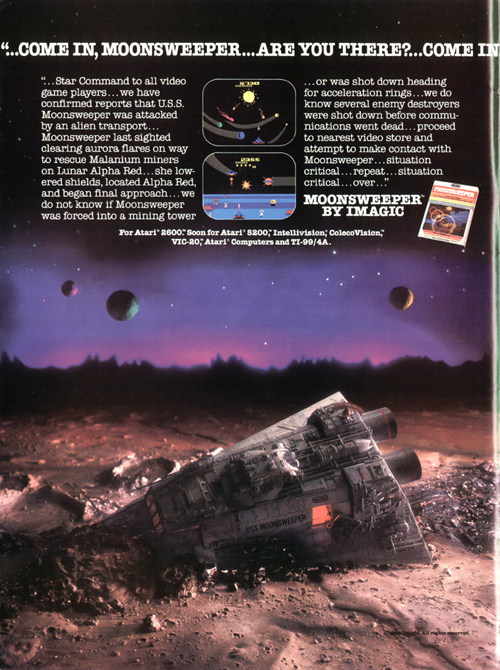
Moonsweeper ad.
Q: The model set used in the ad for Moonsweeper really looks fantastic.
Michael Becker: That was a model I built that was used by our agency.
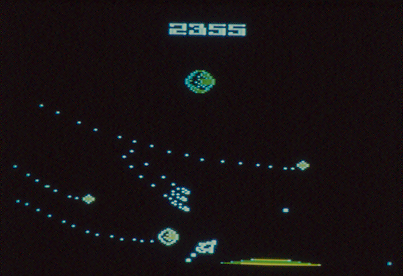
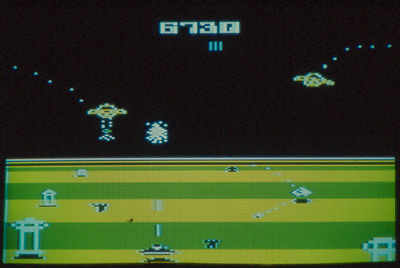
Moonsweeper screenshots.
Q: Two of your Moonsweeper (artistic) screenshots are different from the rest of the VCS slides in that they don't look like the typical 'cut and paste' creations. They appear to be close to actual screenshots and are similar to the actual VCS game, although there's enough differences to make me think it's either an early (prototype) version or enhanced with added graphics, or possibly for another system. These could possibly be static screens created
on the Atari 800 (see the Atari 800 game concept screenshots below; the "Rat Patrol" slide uses a similar trail of 'dots').
Michael Becker: I believe these are VHS screens.
Q: Rob Fulop mentioned that his Fathom game started with a picture you did of a dolphin jumping out of the water. Was it common for a programmer to get an inspiration for a game design from an artist in that regard? What was the creative process like?
Michael Becker: That was an example of a single animation inspiring Rob, but it was different with every game. I remember on Dragonfire that Bob Smith was real interested in inventing a new joystick dynamic and came up with the concept of Jacks - using the joystick to ‘sweep up’ objects in the playfield. He also liked The Hobbit, and we brainstormed back-and-forth a little and came up with the idea of grabbing treasure away from a dragon.
Willy had mentioned this idea of putting all (or most of) the sprites together to make 2 large characters for a fighting game, but this was laughed at by the executives. I liked the idea of bigger sprites and so Bob and I worked out to make an animated dragon that stalked across the bottom of the screen.
Actually, it was a lot like it still is today. You work with a few guys (or gals) who you click with and together you just pitch ideas back-and-forth, try a few things, and if the chemistry is good you will come up with something fun. Sometimes you get something that works but isn’t fun, but that’s where the magic is, isn’t it?
Q: Why are some VCS cart labels text-only (no artwork)?
Michael Becker: These were compositions we made ourselves for trade shows like CES. To actually print them, you had to print a solid square of white ink first, let it dry, then print four colors on it. That was the only way to print on the chrome paper. It was very expensive, but kids loved the look. In Imagic’s first focus test of the Mylar boxes, a kid swiped one and wanted to take it home; that’s when they knew that was the ONE they wanted to use!
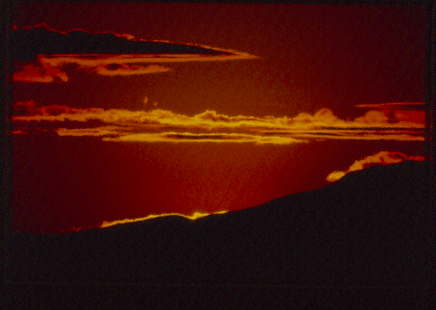
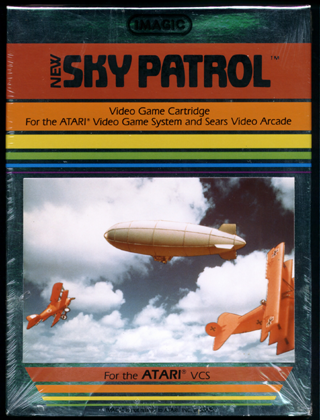
(LEFT) Sky Patrol Image Bank slide (LEFT) and prototype box (RIGHT).
Q: One of your slides is of a sunset. I can't match this with any game that Imagic released. Was this for an unreleased game?
Michael Becker: This was an Image Bank slide purchased to composite into the sky for the Sky Patrol balloon game - Brad Stewart's VCS game that never got published. Obviously the box didn’t get finished, either!
Q: Brad Stewart offered his (unfinished) Sky Patrol game to the CGE show in 1999 to make available. He also had a box and labeled cart that I was able to get scans of (you can see them in my article). I’m guessing these were created for promotional use.
Michael Becker: Speaking of promotion, this was a Marketing "dohickey" for VCS Dragonfire. I think it actually got manufactured, but I only have the image of it:
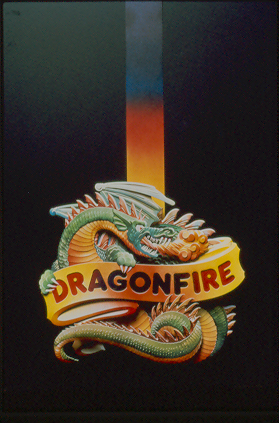
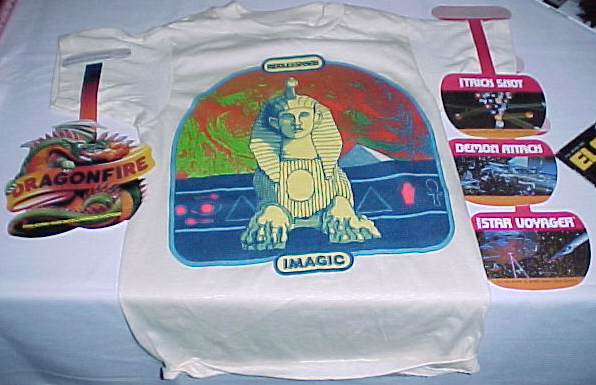
Q: It was long thought that the VCS version of Wing War was never released, but in the late 90s it was found to have been released in Europe (as a PAL version).
Michael Becker: It's news to me that Wing War was released on the European market. I had been told that the program wasn't going to be released. To be honest, I don't remember much about the game. It was an attempt to emulate Joust's flight characteristics which, to me, felt really good. The wandering around the maze looking for goodies bit was more a reason to fly around than much else. There was some discussion about turning it into a helicopter game, very similar to the Copter flash game that was popular years ago (Ed.: The Helicopter Game by Leandro Barrreto and David McCandless. Also referred to as Fly The Copter, which itself was based on Sunflat Games' SFCave which was released in 1995). Given how well Copter plays, it probably would have been a good idea. Marketing never told us what to do. Imagic was definitely an Engineer's company, not a Marketing company. The reason Imagic went under was the Marketing VP made some pretty amazing forecasts based more on fantasy than facts as to where the market was going. Imagic borrowed boatloads of money to fund the necessary expansion, and when the market crunched, it couldn't handle the debt burden. Wing War was finished after the market crunched and there just wasn't a sense it would sell in a dead market. I don't recall any other versions being worked on while I was working on the VCS version.
Q: There were versions released for the Atari 800, Colecovision, and TI-99/4a.
Michael Becker: The Mattel side worked in a separate area than we did and about the only time we got together en masse was for brainstorming. The VCS team and Mattel team had two distinctly different cultures. As to an Atari 800 version, it would have been done by Activision, not Imagic. Imagic was almost 100% console oriented (Ed.: Atari 800 Wing War was definitely done by Imagic and programmed by Steve DeFrisco. Also, from your list of titles you've worked on, half the systems are computers).
Q:
Were there any unreleased VCS games that you recall?Michael Becker: Brad Stewart had a game revolving around fire that never made it out of the lab (Ed.: Most likely Fire Fighter, which was released).
Rob Fulop had a really nice, little game involving moving colored tiles around on a screen. It was something like the 15-tile game except you were moving colored tiles (Ed.: Cubicolor, which is based on Ideal Toy's Rubik's Race game, which itself is based on Noyes Palmer Chapman's 15-Puzzle). The difference was it was easier to play, was fast-paced, and had a two-player mode. It was one of the best games for the 2600 but as it was a puzzle and
not action game, it died.
Mark Klein had a porno game he wrote before coming to Imagic (Ed.: Pick Up, which was released by 20th Century Fox). As you might expect, Imagic wasn't too keen on publishing it, but they hired Mark as he demonstrated he could code for the machine.
|
ATARI 400/800/XL |
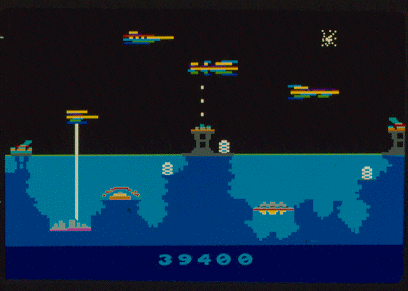
Michael Becker:
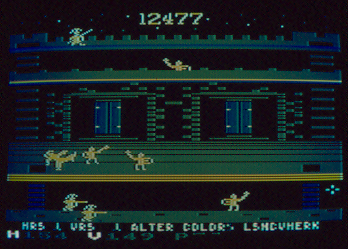
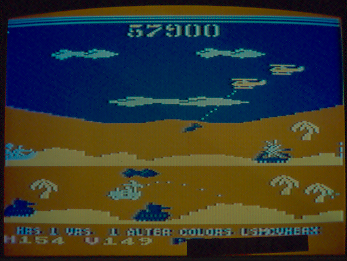
(LEFT) "Dungeon" game concept screenshot; (RIGHT) "Rat Patrol" game concept screenshot.
Q: From Bob Smith:
| “None of these look familiar, although one looks like a tool we wrote. Dennis & I were trying to do a point-of-view display. We were using lines (hmoved missiles) on the 2600, and on the 400/800, I wrote a compaction (folding) technique for rock wall bitmaps, in order to fit the entire thing into an 8K cartridge.” |
|
ODYSSEY2 |
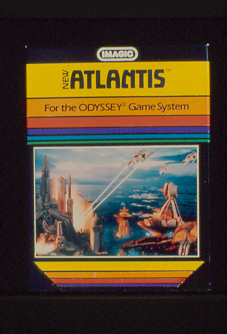
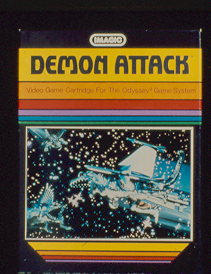
|
INTELLIVISION |
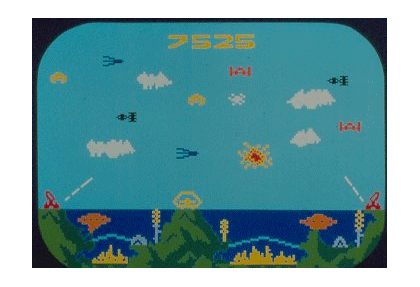
Michael Becker: Imagic was reluctant to put their best programmers - Rob Fulop, Bob Smith, Dennis Koble, etc.- on Intellivision projects because they were among the few who knew the 2600, so they brought in a bunch of college grads
instead.
|
|
|
|
Final artwork for most of the Intellivision games. |
Model photos for Beauty & the Beast, showing various versions |
Q:
Michael Becker:
Maybe that was one of the names. I remember talking with Bruce Davis (later CEO, then top legal) about this game in the lab. It was originally going to be King Kong but we couldn’t get the license (Ed.: Nintendo proved in a court case with their Donkey Kong game against Universal that the movie is in the public domain). A lot of names got tried out when negotiations fell through. Peter Jackson would probably not be amused.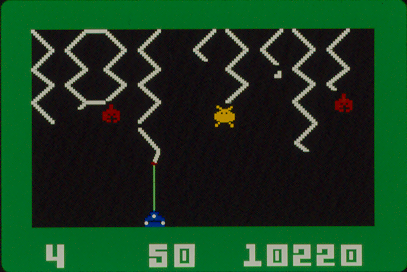
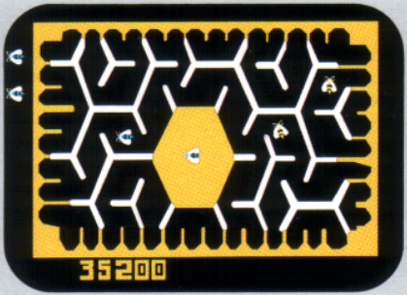
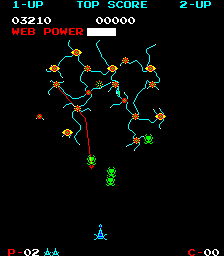
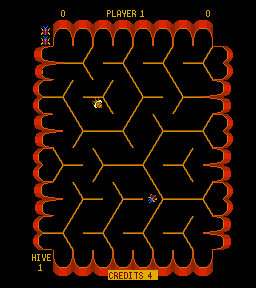
(LEFT) Spiders arcade screenshot; (RIGHT) Beezer arcade screenshot.
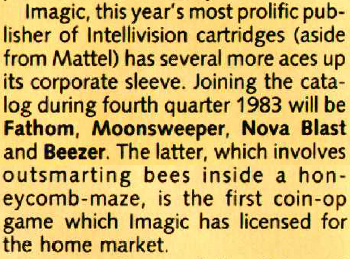
Article from the October 1983
issue of
Electronic Games.
![]()
Q:
Michael Becker:
You know, I think this might be a hand-cut screen of Beezer! I worked on a conversion of an arcade game called Beezer, although we also had a concept called Web War that never got published. Beezer never went far, so I would be equally surprised if it was either of them. I guess this remains a mystery.Q:
I noticed a certain theme in some of your work, regarding swords, knights, and dragons. Was this a result of all the medieval-themed games you worked on, or more an interest of yours? Were you involved in naming any of the games?Michael Becker:
I have been into Tolkien since before gaming. My stepson Keith got The Hobbit read to him as his first bedtime story, so I just sort of gravitated toward it.This is an SCA (Society for Creative Anachronisms) knight in his own armor, along with a shield I painted with a dragon. This was a composite element that was reworked several times and ended up on the Intellivision Swords & Serpents box:
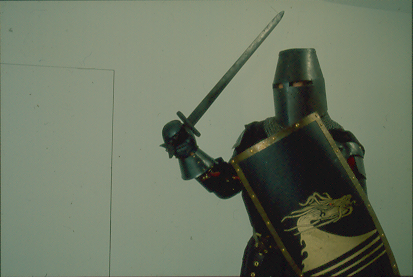
This is an early Swords & Serpents composite that was never used:
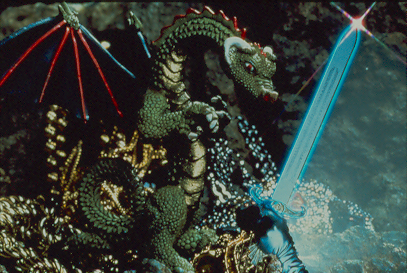
I did a lot of level design on this one, and really had to fight to keep a dragon in the game!
This was a concept painting for Ice Trek:
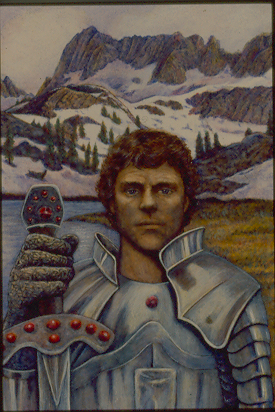
Q: I found 2 different composite artwork slides for Microsurgeon. One was for the Intelliivision version, and I'm guessing the other was for the PCjr. There were also several slides of the little model that was used in the Intellivision one:


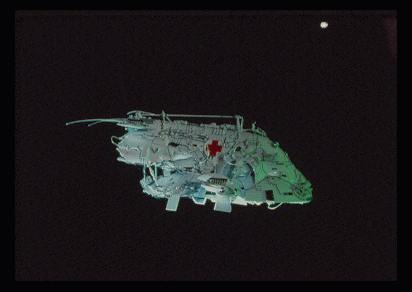
Michael Becker: The little probe ship in the Intelllivision artwork is actually a Star Wars model! The PCjr artwork was a composite of blood cells and layers of line art with optical effects burned in by a company called Full Spectrum in Mountain View. They did a lot of our later cover composite effects.
This was a contract illustration for Intellivision Atlantis. This is when we were going crazy with the instruction books, inspired by the Infocom packages:
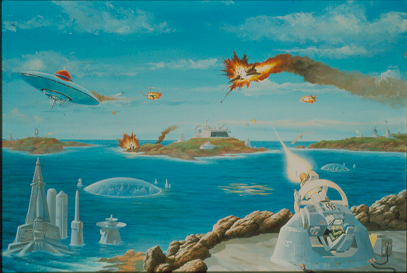
|
COLECOVISION |
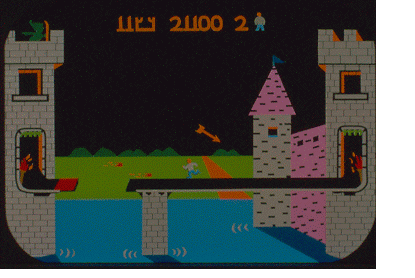
|
VIC-20 |
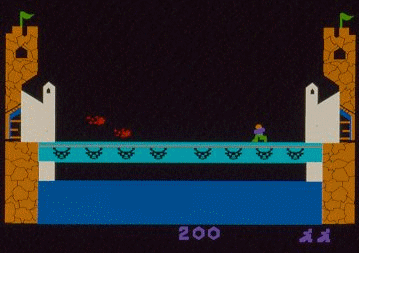
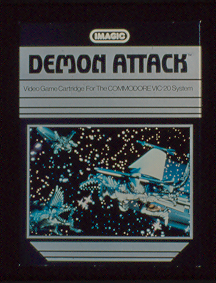
|
COMMODORE 64 |
Michael Becker:
These were part of a series of games based on the Choose Your Own Adventure books. One was called The Cave of Time, by Edward Packard (Ed.: Here's a video of the Apple II version of The Cave of Time. Both the Apple II and C-64 versions were published by Bantam Electronic Publishing).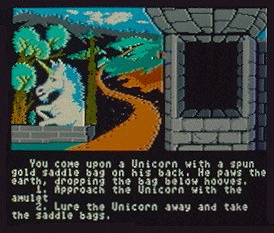
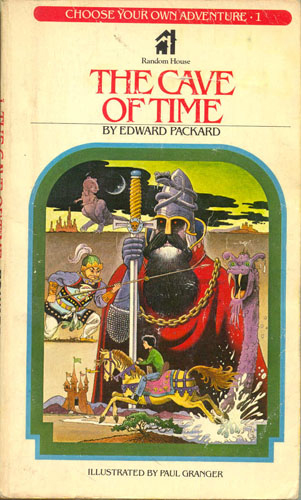
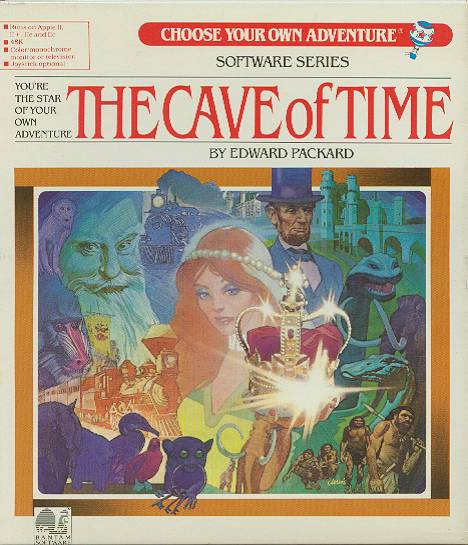
Book synopsis:
| "You are hiking in Snake Canyon when you find yourself lost in the strange, dimly lit Cave of Time. Gradually you can make out two passageways. One curves downward to the right; the other leads upward to the left. It occurs to you that the one leading down may go to the past and the one leading up may go to the future. Which way will you choose? If you take the left branch, turn to page 20. If you take the right branch, turn to page 61. If you walk outside the cave, turn to page 21. Be careful! In the Cave of Time you might meet up with a hungry Tyrannosaurus Rex, or be lured aboard an alien spaceship! What happens next in the story? It all depends on the choices you make. How does the story end? Only you can find out! And the best part is that you can keep reading and rereading until you've had not one but many incredibly daring experiences!" |
Michael Becker:
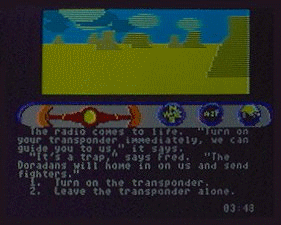
Screenshots for Escape. Note one slide shows "Alameda De Aguilar" for Willy Aguilar.
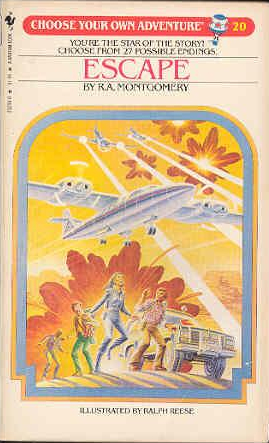
Book cover for R.A. Montgomery's Escape.
Book synopsis:
| "The year is 2045. Civil wars and foreign attacks have split the U.S. into three hostile political areas. One section, Dorado, dominates the others with harsh police-state tactics. You are from Turtalia, a new democracy, and you are returning there with important information about Doradon's plans to invade. The Doradan underground has helped you escape, but now you are on your own. Fighting for a cause that you believe in is noble, but you are scared. Can you make it home safely with the plans for the Doradan invasion? Or will the Doradan Secret Police stop you first?" |
|
TI-99/4a |
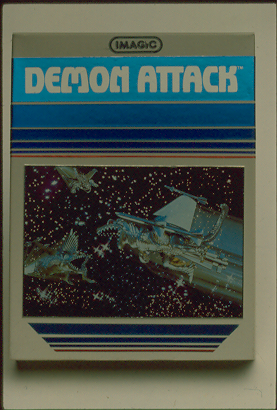
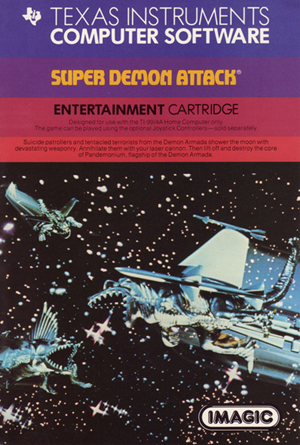
Q:
Michael Becker:
A lot of those were just pounded out and the “Super” probably was just Marketing hype.
|
PCjr |
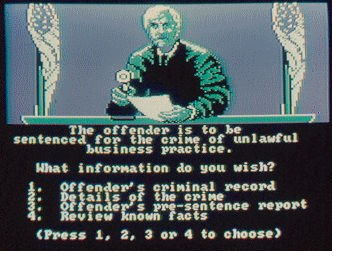
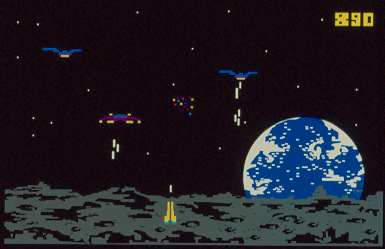
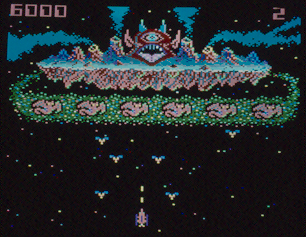
Screenshots for Demon Attack. Here's a video of it.
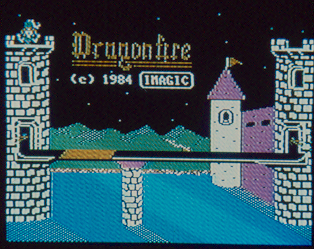
Screenshot for Dragonfire.
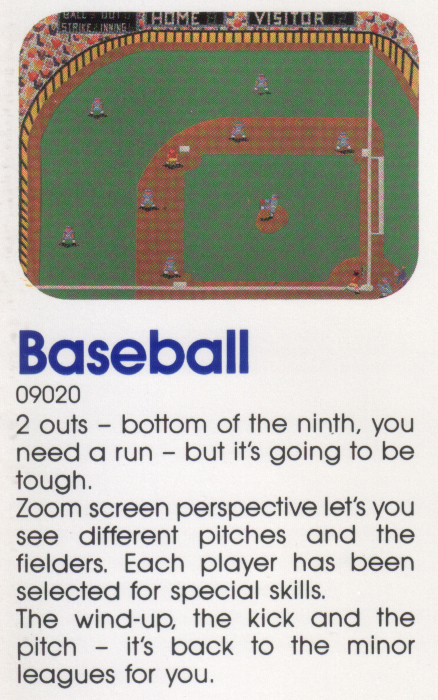
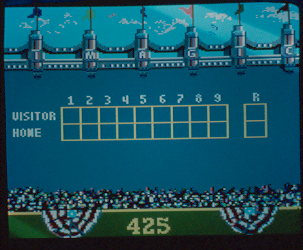
Screenshot for Grand Slam Baseball.
Michael Becker: These are for the I, Damiano Living Literature game for Bantam, which was published:
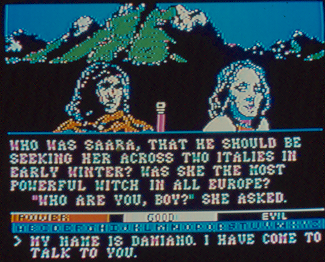
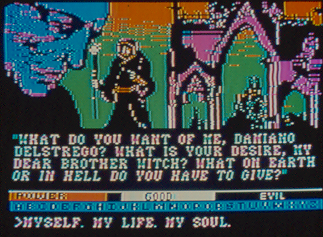
Screenshots for I, Damiano - The Wizard of Partestrada.
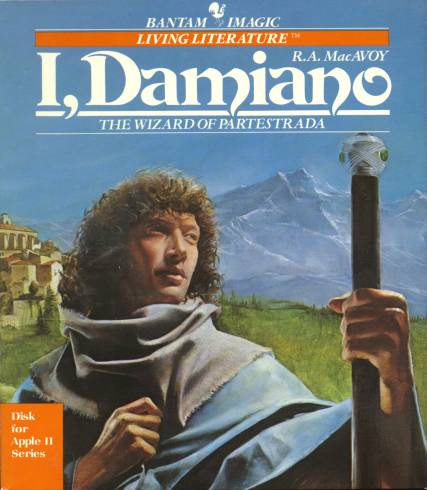
Box for The Cave of Time.
Book synopsis:
| "Set against the turbulent backdrop of the Italian Renaissance this alternate history takes place in a world where real faith-based magic exists. Our hero is Damiano Dalstrego. He is a wizard's son, an alchemist and the heir to dark magics. But he is also an innocent, a young scholar and musician befriended by the Archangel Raphael, who instructs him in the lute." |
Michael Becker: The game was originally called The Damiano Trilogy, since it's based on R.A. MacAvoy's novels Damiano, Damion's Lute, and Raphael (see some footage of the Apple II version on YouTube).
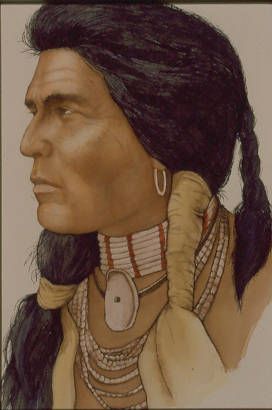
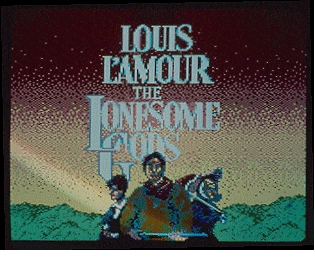
Original watercolor painting (LEFT) and screenshots (RIGHT) for Louis L'amour's PCjr game The Lonesome Gods.
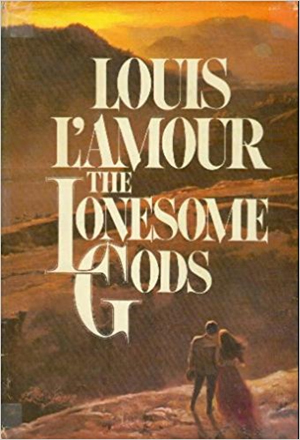
Book synopsis:
| "Here is the fascinating story of Johannes Verne, a young man left to die by his vengeful grandfather, rescued by outlaws and raised in part by the Indians of the desert. Strengthened by the love of two women - Miss Nesselrode, whose mysterious past fires her ambitions for the future and Meghan, a willful young beauty - Verne grows to become a rugged adventurer, a man strong enough to embrace the awesome power of the Palm Springs desert, and bold enough to stake a claim in the bustling world of opportunity that was early-day Los Angeles." |
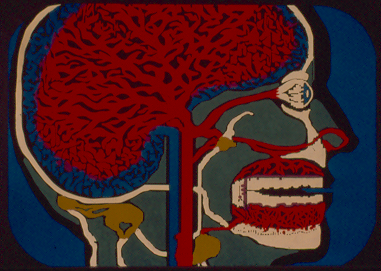
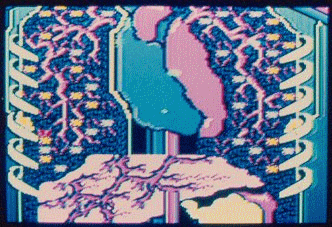
Screenshots for Microsurgeon.
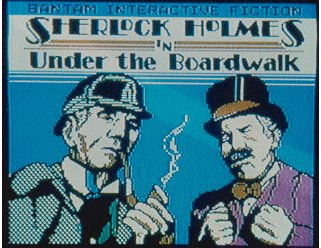
Screenshots for Sherlock Holmes in Under the Boardwalk.
Q:
| ”I also did the Apple II version of an adventure game based on Sherlock Holmes. I don't remember what title wound up on the box. We always referred to it as "Sherlock Holmes”. This was the first and last time I worked on a game as part of a team. We had a professional writer for the text of the game, and an artist to do a graphic of each character to be displayed when that person was in the room.” |
I noticed some of your slides are of Sherlock Holmes in Under the Boardwalk.
Michael Becker:
Right. I don’t recall the Apple II version but it would make sense we were doing two versions at once. Imagine how hard it would have been to code TWO parser systems in parallel! I was the artist Brad mentions; Pete Golden mentioned above was the writer.This is the contract illustration and inside box spread for the unpublished PCjr game, Sherlock Holmes: Under the Boardwalk:
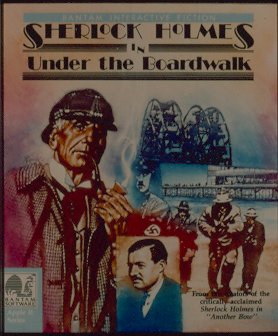
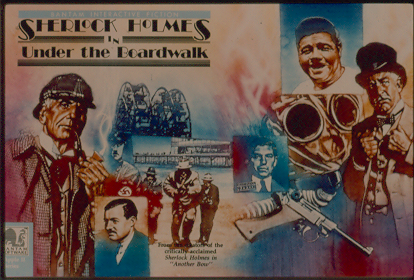
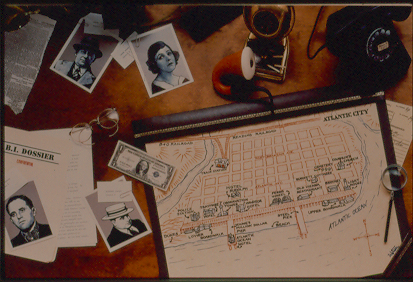
Packaging artwork for Sherlock Holmes in Under the Boardwalk.
Michael Becker:
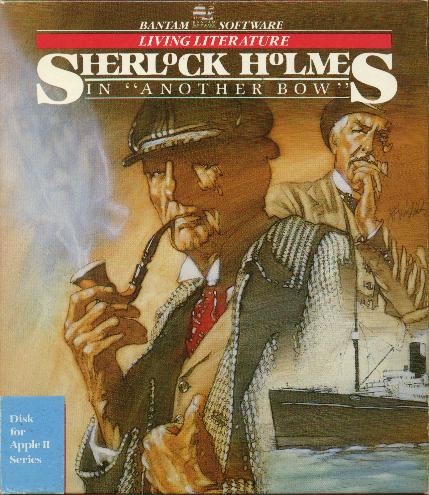
Box for Sherlock Holmes in "Another Bow".
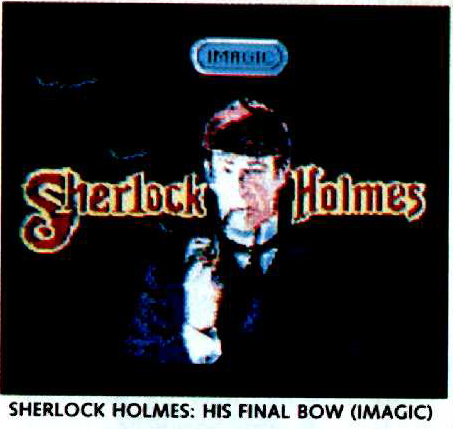
Screenshot of "Sherlock Holmes: His Final Bow" from April 1985 (pg. 33) issue of Electronic Games.
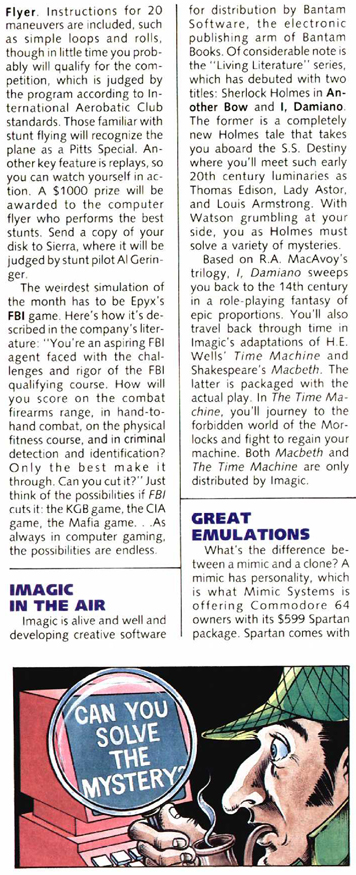
News blurb from April 1985 (pg. 16) issue of
Michael Becker: Imagic had a joint venture with Bantam Electronic Publishing to make games based on some of their books; the games were released under the Bantam Games name, and comprised Bantam Imagic's Living Literature series, with Sherlock Holmes in Another Bow being the first game. As far as I know, this was one of the first partnering of writers in the game industry and helped inspire me to ultimately end up writing all the stuff for the Lord of the Rings games.
I don’t know what happened with Bantam but I think they realized that they weren’t good at the software business. It forced them to push games into their bookstores when they really wanted to push books.
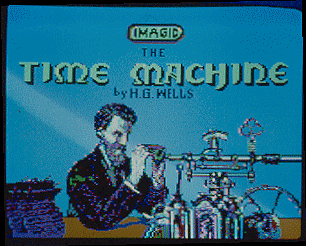
Q:
Michael Becker:
They (unreleased games) were only on development systems, and in some few copies that made it to trade shows. I stupidly gave all my EPROMS to the Salvation Army in the early 90s, along with my Atari and Intellivision. Duh!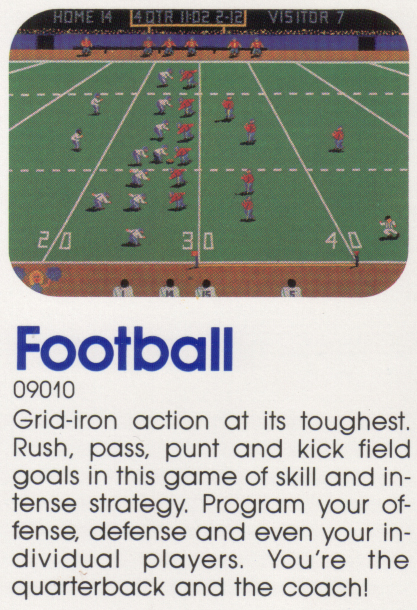
1984 Imagic catalog entry for "Football".
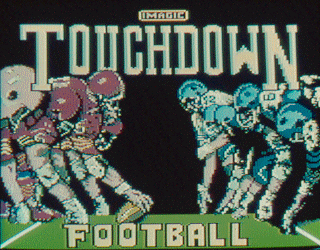
Michael Becker:
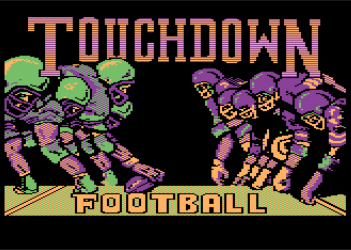
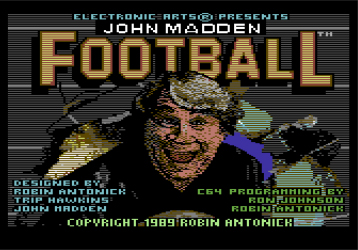
Q:
Michael Becker:
You obviously know more about this than I do. My data comes from EA legend that Trip Hawkins was always playing Touchdown Football around EA and kept telling the producers EA should do more sports games. At this time, Imagic had sold Touchdown to EA and EA was publishing it on the Commodore 64 (and perhaps Apple II). Then (I would guess) this licensing opportunity came up and EA got the Madden rights. This is something Rich Hilleman would know more about since he was producing it at that point in time; all my stuff is pretty much guesswork. But I would think that Trip’s playing Touchdown Football and digging it was factual.
|
WORLDS OF WONDER |
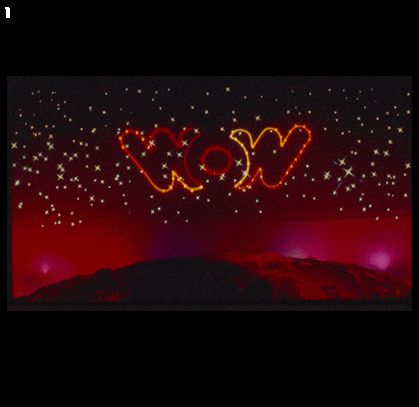
Q:
Michael Becker:
The slides are from the Worlds of Wonder Toy Fair multimedia show introducing Teddy Ruxpin and all their toys for kids (Lazer Tag, Mother Goose, etc.). It was a 20-minute environmental show that ran in NY during the show. I worked for them as a contract Creative Director after Imagic, since Bill Bradley was VP of Marketing from Imagic to WoW and he asked if I would create the Toy Fair multimedia shows to introduce these lines. I did these huge shows with lasers, slides, video projection, custom Teddy voice greetings, and little stories with kids and toys for each product line. Several of them later were turned into TV spots for the toys (Arrrgh! I can’t get the songs out of my head, even after all these years!).WoW Teddy Ruxpin
first commercialWoW Teddy Ruxpin “Frankenstein” commercial
WoW promo video
Q:
I recall the Laser Tag and Teddy Ruxpin toys now that you mentioned it. Ruxpin was like ‘the’ hot toy for a time. I remember there being a slew of “clones” from other companies soon after…Michael Becker: WoW did well but ultimately suffered the same fate as the first cartridge video games - the stores were flooded with the stuff and ultimately the prices fell and the business tanked. It did not help that a cop in L.A. shot a kid who was playing with a Lazer Tag gun.
|
HASBRO NEMO/ISIX |
Michael Becker:
WoW also did some experimental interactive video prototypes using the video guys I worked with on these shows (who incidentally also did the video for the Shockwave game for EA on 3DO).I got out of the industry briefly after Imagic – it was tough being involved in such a quick rise and fall in a company, and especially hard if you had to lay off all your friends and then watch the whole thing wind down until it was the size of a shoebox. But I ended up with Rob Fulop doing multimedia and online game designs for our company, Interactive Productions, that later was renamed PF. Magic. We worked on the designs for the Hasbro
“Isix” VHS Interactive Movie video system. The Isix was a VCR-like box that attached to your VHS player. Think of a second VHS unit with a board filled with RAM that sat on top of the VHS and cabled into it with a controller port. You inserted a videotape with interleaved video (4 tracks) and 16 interleaved tracks of audio (or still images). It worked a lot like railroad switching; if you pressed a controller button at an edit point it could jump to another track (never
backward!). It was this technology that we originally designed Sewer Shark and Night Trap for. That was essentially what they envisioned. I thought it interesting they only ever stress-tested the interactive video with ONE Panasonic player and that after about 100 plays the data began to rub off the tapes.
Q: Didn’t the early digitized video that was done run on a modified Colecovision? I seem to remember reading that somewhere. I know I’ve heard a few different names for that Hasbro system - NEMO being one. According to Owen Rubin (who worked at PF. Magic on Night Trap), NEMO was an acronym for "Never Ever Mention Outside".
Michael Becker:
Aha! Yes, the name was Nemo, or at least one name was. Funny enough, the lead designer of Return of the King (Brett Robbins) was the kid the ad agency used in commercials for the product in focus tests. It had a kid having fantasies (car, girlfriend, etc) that came true with a push of the button.Night Trap was considered ‘violent’ and even got involved in Congressional hearings. I bet that really pleased Rob.
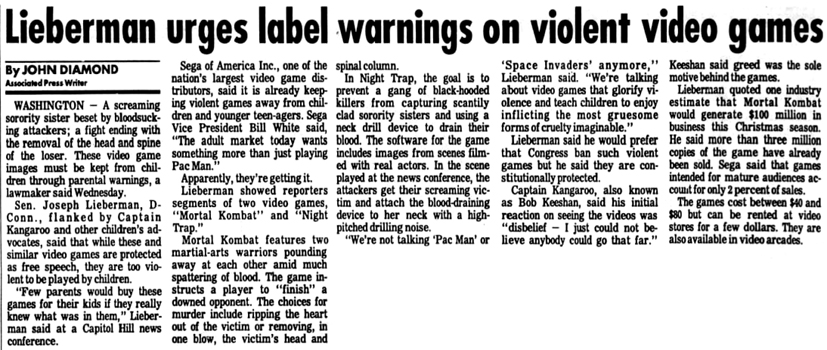
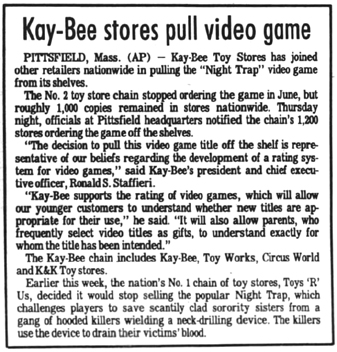
Q:
Michael Becker:
I heard it rumored but never saw it. Darn.
|
EA and beyond |
Q:
What did you work on after the Hasbro project was cancelled?Michael Becker: When Hasbro decided not to produce the Isix box (RAM chips were real expensive back then), they sold the games to Sega for their CD player, who turned them into the first games with video at a very crappy resolution that we called ‘GranolaVision’. We later worked up Rabbit Jack’s online casino suite of games for Steve Case, and did a bunch of multimedia
products on first-generation color Macintoshes. And, of course, we got into CD publishing with CD-I with Phillips, doing a few titles for them. The CD work made me realize that games were getting HUGE and that to do them right you needed a big team and deep pockets. I interviewed at Electronic Arts and came over here almost 13 years ago.
Q:
What are some of the projects you were involved with at EA?Michael Becker:
I put together their CD group, hired all the initial artists, and designed or managed:Shockwave (designed and managed)
Madden 3DO (managed and designed the television format for EA sports)
Soviet Strike (designed)
Nuclear Strike (designed)
WWII Fighters PC (cinematics)
Majestic (community design; real time game designs)
The Two Towers (designed all media)
Return of the King (designed and all media)
The Third Age (designed and all media)
Next LOTR (designing and all media)
Q:
Both Rob Fulop and Bob Smith included your name in at least one of their games (your initials can be shown on-screen in 2600 Fathom, and your first initial & last name appear in the code for 2600 Star Wars: The Arcade Game). Are you aware of any other games with Easter eggs like that?Michael Becker:
I bet there were tons of them. The programmers didn’t always share them with others though, so I don’t really remember examples that you could replicate.Q:
Did you 'sign' any of your artwork (i.e. hiding your name or initials somewhere)?Michael Becker:
Nope.Q:
Have you kept any of your materials from Imagic over the years (besides the slides), such as models, paintings, sketches, etc.?Michael Becker:
I have several of the original paintings, along with all the plastic models. I gave the last Demon (from Demon Attack) to Rob when we were at P.F. Magic, but the rest sit in my attic. I also have other paper docs, records of brainstorm sessions, etc Q: Was there one system that you enjoyed for more than others? Did you primarily do all your design work with an Atari 800, or did you have different tools/systems (i.e. a system for Intellivision, one for the VCS, etc.)?Michael Becker: I liked the PCjr the most, since we had the best tools and it had the greatest capacity. Imagic was the first 3rd-party developer for the PCjr. With the earlier systems I liked Colecovision the most, followed by Intellivision. The Atari VCS was awfully limiting for artwork. Every platform had new tools.
Q:
What's your opinion on how video game industry has changed since the days of Imagic? Are (were) you a video game player/fan, and if so, what are some of your favorites?Michael Becker:
I think games have evolved from being small, elegant expressions of pure fun into large, immersive experiences. Sometimes this is for the better, often for the worse. But I’ve always thought that the best games are still to come (which is why I keep working on them), so I can’t categorically say that I prefer the good old days to the new old days.Of course I play games, but given the thousands that come out every year, I can’t ever find time to finish the big ones. I like story-based games, RTS games, RPG games, online immersive worlds and sometimes playful ones like the Sims. I also keep an eye on paper and miniature games, which have remained a hobby of mine for decades (I have over 20,000 painted miniatures from all eras in my attic, to confess a serious lead compulsion).
Q:
Do you still see any former Imagic co-workers, or have you remained in touch with any?Michael Becker:
I stay in touch with Bob Smith and less with Rob Fulop, and of course see Willy every few days (we ended working on different games in the EA studio), and sometimes see Mark Klein, Brad, Dave or a few of the others. We always marvel at how much older we’re getting.
See a documentary about the making of Imagic's Atlantis (which features Michael Greene) and several other well-known Imagic alumni, as well as a short piece on the making of Wing War from the TV show Just Kidding: